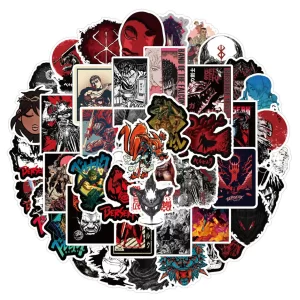The horror genre has undergone captivating transformations over the past decade, shedding its reputation as a cheap and predictable form of entertainment. Instead, numerous films have emerged as “arthouse” projects that explore deeper metaphors and compelling narratives. By focusing on more than just jump scares, these movies have given rise to the term “elevated horror.”
However, there are those who question this categorization, arguing that it unfairly separates horror from other genres. Guillermo del Toro, a visionary filmmaker, has spent his career challenging this notion and asserting that horror is just as artful as any other genre. One of his notable works, Crimson Peak (2015), beautifully exemplifies why horror should be taken seriously and not confined to a singular label.
A Journey into Victorian Gothic Romance
Crimson Peak transports viewers to the Victorian era as we follow Edith Cushing’s (Mia Wasikowska’s) quest for fame for her supernatural literary creations. Frustrated by the lack of respect she receives, Edith crosses paths with Thomas Sharpe (played by Tom Hiddleston), an English entrepreneur with an unconventional bond to his sister Lucille (Jessica Chastain). Following her father’s demise, Edith marries Thomas and moves into Allerdale Hall, a grand mansion shrouded in mystery. Within these eerie surroundings, she finds herself haunted by otherworldly beings, seemingly warning her of a grim fate.

Unraveling Misguided Marketing
One of the greatest disservices to Crimson Peak was its misguided marketing as a haunted mansion horror film. While Guillermo del Toro may not have intended this interpretation, the studio promoted it as such, craving a broader audience. Yet, if the film had been released in today’s era, it might have been better received. Audiences now exhibit a greater appreciation for unconventional stories, and Crimson Peak would likely be recognized as a prime example of elevated horror. The film’s symbolism and twisted romance would captivate cinephiles, highlighting the sins of the past within its narrative.
A Visual Feast for the Senses
Crimson Peak is a visual delight, showcasing Guillermo del Toro’s impeccable attention to detail. The grandiose practical sets, combined with exquisite production and costume design, establish the perfect ambiance for the story’s unfolding. Of particular note is the evocative use of the color red, blurring the line between the violent actions within the mansion and the appearance of the spectral entities. This deliberate juxtaposition creates a uniquely unsettling atmosphere.
Compelling Characters and Structural Challenges
The strength of Crimson Peak lies in its intriguing characters, although the film does face some challenges in terms of character development and structure. The enigmatic Sharpe siblings, portrayed by Tom Hiddleston and Jessica Chastain, command the screen with their captivating performances. Their complex relationship contributes layers of darkness and unpredictability to the narrative, elevating their roles beyond simple antagonists.
However, the same cannot be said for the remainder of the cast. It is not due to poor acting but rather the limited evolution their characters experience. Mia Wasikowska shines as Edith but faces an unevenly written characterization. Initially depicted as a determined and strong-willed woman, her transformation into a damsel in distress feels jarring and inconsistent. Charlie Hunnam’s portrayal of Dr. Alan serves primarily as a plot device, lacking significant depth.
Moreover, Crimson Peak simultaneously challenges and underwhelms through its level of complexity. Guillermo del Toro entrusts the audience to discern subtle visual cues and seemingly insignificant dialogue that later gains significance. While this approach can be rewarding, certain character decisions feel forced and unnatural, detracting from the overall satisfaction of their arcs. The film’s intention to cater to both casual viewers and those who enjoy analyzing its deeper meaning is commendable, but stronger character development would have fortified this endeavor.
The Heart of Crimson Peak: Gothic Romance
Despite its flaws, Crimson Peak succeeds in embracing its core element: gothic romance. Guillermo del Toro masterfully weaves a love story that is simultaneously captivating and unsettling. Human dynamics take center stage, and even characters who are not inherently likable evoke a sense of care and intrigue. The film taps into traditional gothic romance tropes that have faded from contemporary cinema. Though distinct in tone, Crimson Peak can be likened to Francis Ford Coppola’s gothic romance film, Dracula (1992).
An Immersive Experience
Crimson Peak should be experienced without expectations of a traditional ghost story. While supernatural elements are present, they serve as a backdrop for the tragic tale of two lovers entangled in the sins of the past. Guillermo del Toro offers a unique exploration of the ghosts we create through our actions. Delighting in the bizarre world he has crafted, viewers can immerse themselves in this atmospheric, gothic romance that transcends genre conventions.
Conclusion
Frequently Asked Questions
1. What is the significance of the Victorian Era setting in Crimson Peak?
The Victorian Era setting in Crimson Peak emphasizes the repressed desires and societal expectations of the characters. It serves as a backdrop for the unfolding gothic romance, heightening the tension and atmosphere of the story.
2. Why was Crimson Peak marketed as a haunted mansion horror film?
The marketing approach for Crimson Peak sought to attract a wider audience by emphasizing the haunted mansion aspects of the film. However, this marketing strategy failed to capture the true essence of the movie, which goes beyond simple horror and delves into the complexities of gothic romance.
3. How does Crimson Peak compare to other gothic romance films?
Crimson Peak stands out among other gothic romance films with its visually stunning cinematography and Guillermo del Toro’s unique storytelling style. While paying homage to traditional gothic romance tropes, the film offers its own distinctive narrative twist and explores deeper themes.
4. Is Crimson Peak a film suitable for horror enthusiasts?
Crimson Peak may not satisfy audiences seeking a conventional horror experience filled with jump scares. However, those with an appreciation for atmospheric storytelling, complex characters, and the nuances of gothic romance will find much to enjoy in this visually captivating film.
5. How does Crimson Peak reflect Guillermo del Toro’s directorial style?
Crimson Peak exemplifies Guillermo del Toro’s signature visual flair and meticulous attention to detail. The film showcases his ability to craft immersive worlds and explore the darker aspects of human nature within fantastical contexts.
Crimson Peak Review
Summary
Crimson Peak navigates the intricacies of gothic romance within the horror genre, showcasing Guillermo del Toro’s vision and artistry. Its misrepresentation during its release highlights the changing landscape of cinematic preferences, as contemporary audiences would likely appreciate its dark symbolism and unconventional narrative. While the film faces challenges in terms of character development and structural balance, its visual appeal and exploration of nuanced human dynamics elevate it beyond a traditional horror flick. Crimson Peak invites viewers to reflect on the ghosts that haunt us, both literal and metaphorical.













